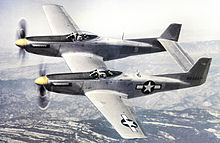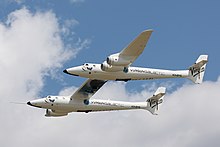Benutzer:Frank Murmann/Twin-fuselage aircraft


Ein Doppelrumpfflugzeug verfügt über zwei komplette Rümpfe. Es muss daher von einem Flugzeug mit Doppelleitwerksträger unterschieden werden. Doppelrumpfflugzeuge wurden aus den unterschiedlichsten Gründen konstruiert und einige Konstruktionen wurden in Serie gefertigt.
Frühe Wasserflugzeuge
[Bearbeiten | Quelltext bearbeiten]Zwei Rümpfe als Schwimmkörper bieten eine hohe Stabilität im Wasser, ohne gesonderte Schwimmer an den Tragflächenenden zu benötigen. Des Weiteren ermöglichen Schwimmer, die direkt unter den Rümpfen angebracht oder in den Rümpfen integriert sind, ein sehr stabiles Flugwerk. Während und nach dem Ersten Weltkrieg wurden diverse Wasserflugzeuge mit Doppelrumpf und Flugboote mit zwei Bootskörpern entwickelt, von denen einige auch gebaut wurden. Bereits 1913 demonstrierte der britische Unternehmer und Pilot Eric Gordon England die Funktionsfähigkeit dieses Konstruktionsprinzips mit seinem Radley-England Waterplane.
Im Jahr 1915 wurde die Twin Blackburn zur Abwehr von Zeppelinen vorgestellt. Von diesem Muster wurden einige dieser Maschinen gebaut, von denen jedoch nur wenige tatsächlich eingesetzt wurden.
Mehr Erfolg hatte Savoia-Marchetti mit den Flugboottypen S.55 und S.66.
The heavy bomber
[Bearbeiten | Quelltext bearbeiten]During WWI, Caproni introduced one of the first production landplanes to feature twin fuselages, in the Ca.4 heavy bomber, manufacturing around 50 aircraft in a range of variants.
The heavy glider tug
[Bearbeiten | Quelltext bearbeiten]During World War II the need arose for a heavy glider tug capable of towing the large Gotha Go 242 and even larger Messerschmitt Me 321 Gigant. The Heinkel He 111Z Zwilling (twin) was created by joining two He 111 fuselages with a new wing centre section and adding a fifth central engine. Although liked by its pilots when it first flew in 1941, even the 111Z could not tow a fully laden Gigant, and although a small batch became operational they saw little action.
A few variants were developed for roles such as long-range reconnaissance or air-launched anti-ship missile carrier, but none entered service.
Heavy fighters
[Bearbeiten | Quelltext bearbeiten]During World War II a need arose for a heavy fighter, which could not be met by a new design proposal in a reasonable time frame. Joining two examples of an existing light fighter aircraft was one way to achieve this.
The German Messerschmitt Bf 109Z twin (Zwilling) Bf 109 prototype was destroyed in an attack by the British in 1943 before it was completed, and the project subsequently abandoned. The later Me 609 twin Me 309 project was never built.
In 1944 Dornier proposed the Dornier Do 635 long-range reconnaissance variant of the Do 335 Pfeil heavy fighter, to have twin Do 335 fuselages and four engines. It was never built.
The Italian Savoia-Marchetti SM.92 prototype was unusual in being an adaptation of a twin-boom design but did not enter production.
The North American F-82 Twin Mustang arrived too late to enter service during the War but later saw service in the Korean war.
Space launchers
[Bearbeiten | Quelltext bearbeiten]More recently the idea of a dedicated re-usable large mothership, capable of carrying and launching a spacecraft, has gained interest. The twin fuselage configuration offers the advantage of a clean payload area underneath the wing centre section, without the need for exceptional ground clearance beneath the fuselages.
Early concepts included the Conroy Virtus and Twin-fuselage Lockheed C-5 Galaxy Shuttle transport aircraft of 1974.
Following the success of the Scaled Composites White Knight prototype the White Knight Two is under development, with the first example being used to flight-test the SpaceShipTwo suborbital passenger craft.
The Scaled Composites Stratolaunch, informally known as the Roc, has the longest wingspan of any aircraft ever flown, at Vorlage:Convert. It is owned by Stratolaunch Systems, who are currently developing the air-launched spacecraft envisaged as its payload.
NASA have flown a scaled-down demonstrator of a rocket-assisted Towed glider air-launch system, in which the laden twin-fuselage mothership is towed to altitude as a glider and released. Its rocket engine then ignites, propelling it to a speed and altitude greater than those of the tow plane. The payload spacecraft is then released.
Significant one-offs
[Bearbeiten | Quelltext bearbeiten]The Fouga CM.88 Gemeaux is constructed from two Fouga CM.8 gliders. It was used as an engine testbed for many years, with either a single engine mounted centrally above the wing or twin engines above each fuselage.
The Boerboon & Coller Yak-110 is an aerobatic type conceived to be eyecatchingly different. Featuring twin Yak-55 fuselages with a third, centrally-mounted jet engine, it is the only trimotor cleared for unlimited aerobatics and performs at events in the USA.
List of twin-fuselage aircraft
[Bearbeiten | Quelltext bearbeiten]Types are listed in chronological order of first flight or, for those which never flew, of project announcement.
| Typ | Land | Antrieb | Funktion | Baujahr | Art | Anzahl | Anmerkung |
|---|---|---|---|---|---|---|---|
| Belyayev DB-LK | USSR | Propeller | Bomber | 1940 | Prototype | 1 | |
| Bestetti BN.1 | Italy | Propeller | Private | 1940 | Sportplane. | ||
| Blackburn T.B. | UK | Propeller | Patrol | 1915 | Production | 9 | Floatplane. |
| Blériot 125 | France | Propeller | Transport | 1931 | Prototype | 1 | 12 seat airliner. |
| Boerboon & Coller Yak-110 | USA | Mixed | Private | 2018 | Operational | 1 | Two joined Yakovlev Yak-55s. Trimotor with two tractor props and one jet engine.[1] |
| Caproni Ca.4 | Italy | Propeller | Bomber and transport | 1915 | Production | 44+ | Series of types.[2] |
| Conroy Virtus | USA | Propeller | Transport | 1974 | Project | 0 | Shuttle transport |
| Dornier Do 635 | Germany | Propeller | Fighter | 1944 | Project | 0 | Twin Dornier Do 335 Pfeil proposal. |
| Twin Ercoupe | USA | Propeller | 1946 | 1 | Twin ERCO Ercoupe one-off conversion. | ||
| Fokker K.I | Germany | Propeller | 1915 | Prototype | 1 | Kampfflugzeug (twin fuselage with nacelle) | |
| Fouga CM.88 Gemeaux | France | Jet | Experimental | 1951 | Operational | 1 | Twin Cyclope, jet engine testbed, 2 built[3] |
| General Aircraft Twin Hotspur | UK | Glider | Experimental | 1942 | 1 | Twin General Aircraft Hotspur | |
| Heinkel He 111Z | Germany | Propeller | Utility | 1941 | Production | 15 | Glider tug. Variant of the He 111. |
| Labourdette-Halbronn H.T.1 | France | Propeller | Torpedo bomber | 1918 | Prototype | 1 | Flying boat. One H.T.1 (1918) flown.[4] |
| Labourdette-Halbronn H.T.2 | France | Propeller | Torpedo bomber | 1919 | Prototype | 2 | Flying boat. Two H.T.2 (1919) flown.[4] |
| Twin fuselage Lockheed C-5 Galaxy | USA | Jet | Transport | 1974 | Project | 0 | Shuttle transport aircraft proposal.[5][6] |
| Messerschmitt Bf 109Z | Germany | Propeller | Fighter | 1943 | Project | 0 | Twin Bf 109 prototype. Destroyed while under construction.[7] |
| Messerschmitt Me 609 | Germany | Propeller | Fighter | 1941 | Project | 0 | Twin Me 309 proposal.[7] |
| Newbury Manflier | UK | Propeller | Experimental | 1979 | Prototype | 1 | A two-place human-powered aircraft, by Nicholas Goodhart. 138 ft wingspan, and each pilot sitting in fuselages 70 ft apart. [8][9][10] |
| North American F-82 Twin Mustang | USA | Propeller | Fighter | 1945 | Production | 272 | Long-range. |
| Pipistrel Taurus G4 | Slovenia | Propeller | Experimental | 2011 | Prototype | 1 | Electric aircraft and competition winner. |
| Radley-England Waterplane | UK | Propeller | Racing Aircraft | 1913 | Prototype | 1 | Damaged, rebuilt in modified form as Waterplane 2. |
| Ricci R.1 | Italy | Propeller | 1917 | Prototype | Flying-boat | ||
| Savoia-Marchetti S.55 | Italy | Propeller | Multirole | 1924 | Production | 243+ | Flying boat. |
| Savoia-Marchetti S.66 | Italy | Propeller | Transport | 1931 | Production | 24 | Flying boat. |
| Savoia-Marchetti SM.92 | Italy | Propeller | Fighter | 1943 | Prototype | 1 | |
| Scaled Composites Model 348 White Knight Two | USA | Jet | Spacecraft launcher | 2008 | Prototype | 1 | |
| Scaled Composites Model 351 Roc | USA | Jet | Spacecraft launcher | 2019 | Prototype | 1 | Launcher for Stratolaunch spacecraft. |
| Scaled Composites Model 367 BiPod | USA | Propeller | Experimental | 2011 | Prototype | 1 | Flying car, carried out "hops" under wheeled power. |
| SSAKTB SL-2P | Lithuania | Glider | Experimental | 1987 | Prototype | 1 | Flying laboratory, made from two LET L-13 Blaník gliders.[11][12] |
| Thomas-Morse MB-4 | USA | Propeller | Utility | 1920 | Prototype | 2+ | Mail plane |
| Towed glider air-launch system | USA | Spacecraft launcher | 2013 | Project | 0 | NASA Dryden[13] | |
| Tupolev ANT-22 | USSR | Propeller | 1934 | Prototype | 1 | Flying boat. | |
| Voisin Type O | France | Propeller | 1914 | Prototype | 1 | Made by merging two Voisin Type M aircraft.[14][15] | |
| Wagner Twin Cub | USA | Propeller | 1952 | Prototype | 1 | Twin Piper Cub one-off conversion.[16] | |
| Wight Twin Seaplane | UK | Propeller | 1916 | Prototype | 4 | Variant of the Wight Twin Landplane of twin boom configuration. |
Siehe auch
[Bearbeiten | Quelltext bearbeiten]Literatur
[Bearbeiten | Quelltext bearbeiten]- Bill Gunston: The Cambridge Aerospace Dictionary. Cambridge University Press, Cambridge 2004, ISBN 0-521-84140-2.
Einzelnachweise
[Bearbeiten | Quelltext bearbeiten]- ↑ The Yak-110 Is Two Planes Plus A Jet Engine. In: World War Wings. Abgerufen am 7. April 2021.
- ↑ "The Caproni Bombing Triplane CA-4-1915", Flight, Volume XI, Issue 25, No. 547, 19 June 1919, pp. 797–799. Retrieved: 29 October 2013.[1]
- ↑ http://johnlinde.ca/Early_Designs.html
- ↑ a b Davilla, J.; French aircraft of the first World War (2002), Flying Machines Press, Page 287
- ↑ Tails through time
- ↑ Shuttling the Shuttle: Twin fuselage C-5 Galaxy
- ↑ a b Green, W.; Warplanes of the Third Reich, Macdonald and Jane's, 1970.
- ↑ https://www.facebook.com/watch/?v=259173070818323
- ↑ J2mcL Planeurs - Fiche planeur n°.
- ↑ Exotic Airplanes.
- ↑ Twins - Nest of Dragons.
- ↑ J2mcL Planeurs - Fiche planeur n°.
- ↑ 'Gliding' to Space: A Novel Means of Launching Space Satellites
- ↑ Voisin M/O.
- ↑ English: Voisin Type O. 1916.
- ↑ http://www.twinnavion.com/oddballs.htm
[[Category:Twin-fuselage aircraft| ]] [[Category:Aircraft configurations]] [[Category:Lists of aircraft by design configuration]]